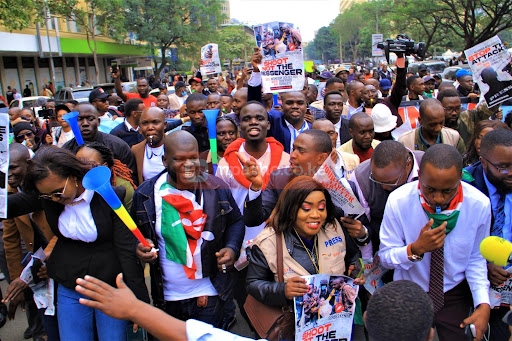A few days ago, few celebrated World Camel Day. The camel's role in health and happiness is only just emerging, but it remains the most awe-inspiring animal much loved by nomads.
In pastoralist parlance, the camel is the Ferrari of the desert. According to anthropologist Prof I M Lewis, the camel is a measure of a man’s substance and in their social and economic transactions, the pastoralists operate on a camel standard.
While the camel is found across the globe, few fully appreciate its importance and place in the animal kingdom. It occupies pride of place among the nomads of northern Kenya and across the Horn. It defines the stature and economic status of the nomad. Folklore is awash with the important place this amazing creature occupies in their socioeconomic setting.
Before the advent of cash and rural-urban migration, the camel was the currency. Among the nomads, it featured in almost every transaction and more tellingly used to pay for dowry and as blood money for restitution. Dowry and blood money are vital aspects of a nomad's life and using the camel to pay for both signifies the important place it occupies in the nomads' culture.
It is their ultimate measure of pride and status. It upsets nomads when camels are compared to cars or cattle. The camel is not only the most enduring and hardened animal in the desert that can walk for days without water or pasture, but science is only recently waking up to the fact that the beast is best for many medicinal qualities too.
Among the nomads are various narrations alluding to the health benefits of the camel's milk and urine. Some attribute this to the plants it eats but it could also be a naturally endowed benefit.
The milk of the camel is now under heightened research and according to the results of some studies, it has medicinal value. Numerous studies confirm its value in the treatment of diabetes. There are claims that it cures autism in children and legend has it that its milk and urine is a cure for HIV.
Camel is more nutritious, with more protein content and 50 per cent less fat than beef although fat is not the monster modern science makes it. These benefits are not far-fetched and are worth exploring.
In the old days, the camel was the Mercedes Benz of the Bedouins. Even today in parts of the Middle East and Africa the wealthy and well-connected keep it as a status symbol. In Nairobi are wealthy individuals who spend their weekends in their camel ranches outside the city.
It is a measure of achievement to buy and rear a large herd of camels among the nomads. Despite the longstanding and wide use of money as currency, it is primarily the size and quality of his camels that a man’s substance is most tellingly measured.
However, despite the camel’s value and importance, and the potential to exploit its milk and its medicinal value, governments have not been of much help in its exploitation. This is in line with the wider government policy of neglecting the pastoralist.
In Kenya, successive regimes have neglected the pastoralists and left them to their own devices. Little development has been happening in the north over the decades the country has been independent despite contributing 29 per cent to the GDP. Devolution has not been of much help either due to devolved corruption or mismanagement of resources.
Devolved governments should not only depend on national government revenue. The proponents of centralisation, which presided over decades of marginalisation and political and economic subjugation, may construe this to parrot their opposition to decentralising services and devolving funds.
This is far from it. In fact, the central government retains much more than it requires to function as almost every department has been devolved with little funding following. As much as devolved units must fight for more than 50 per cent of national government revenue, it is also not wise to solely depend on it.
Northern Kenya must change its devolutionary policies of operation. They ought to dedicate whole industries and build factories not only to process the invaluable milk and meat of the camel but to also explore the value addition angle of its hides, manure and urine.
For example, the world over, leather shoes and belts are much sought-after merchandise and the hide of the camel is the main, if not the only raw material used in their manufacture. When resource managers talk of value addition, their main focus is on the meat.
Yes, its meat is important as much as it is under-sold and the nomad does not benefit as much from it, but the camel is king. Some governors proposed the building of fruit processing factory and investing hundreds of millions of shillings. This is not entirely wrong but farming, as much as it is gaining traction.
Despite the limited support from governments and other system providers, the backbone of the nomads' economy is livestock of which the most important and best suited to our natural habitat is the camel. Our governments must learn to build on the plenty we have before we venture into other fields.
As we celebrate the camel, both levels of government and entrepreneurs should invest in its potential to diversify income streams and further propel the progress of the north.



![[PHOTOS] King of Spain hosts Ruto, other leaders for dinner](/_next/image?url=https%3A%2F%2Fcdn.radioafrica.digital%2Fimage%2F2025%2F06%2F5cffbeef-dbaf-4ff2-9170-111725c8ec5f.jpg&w=3840&q=100)







